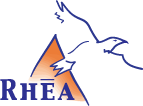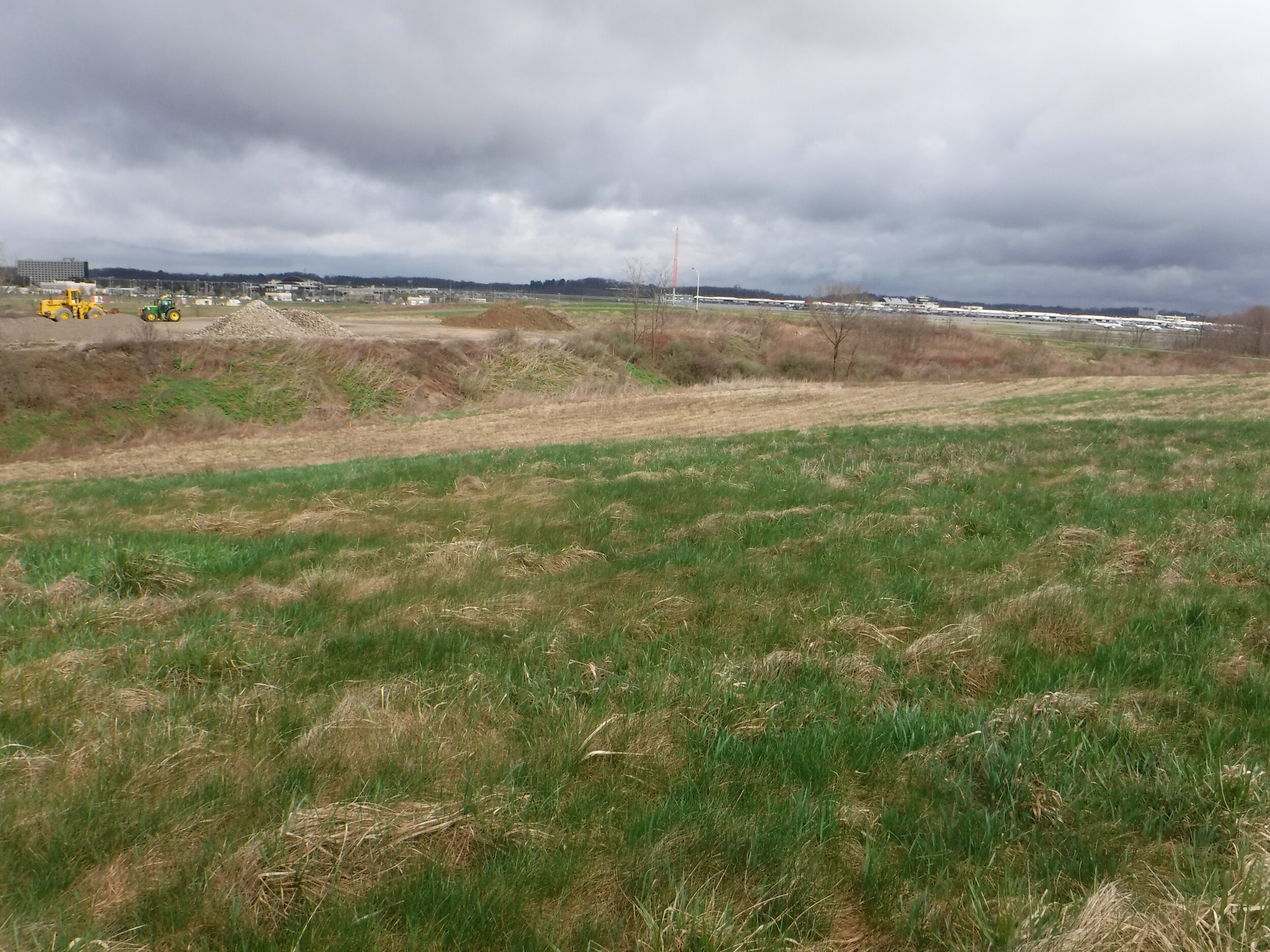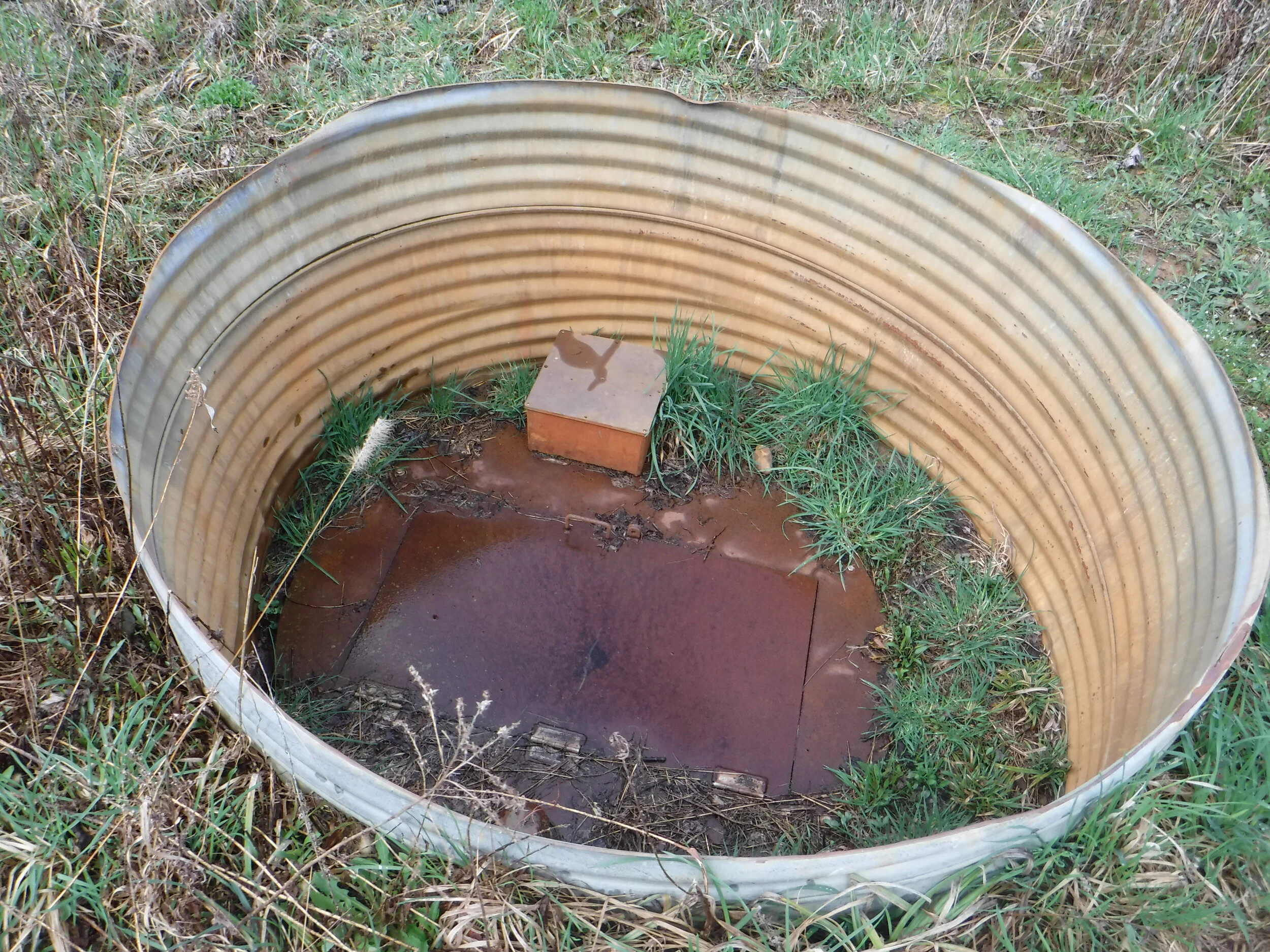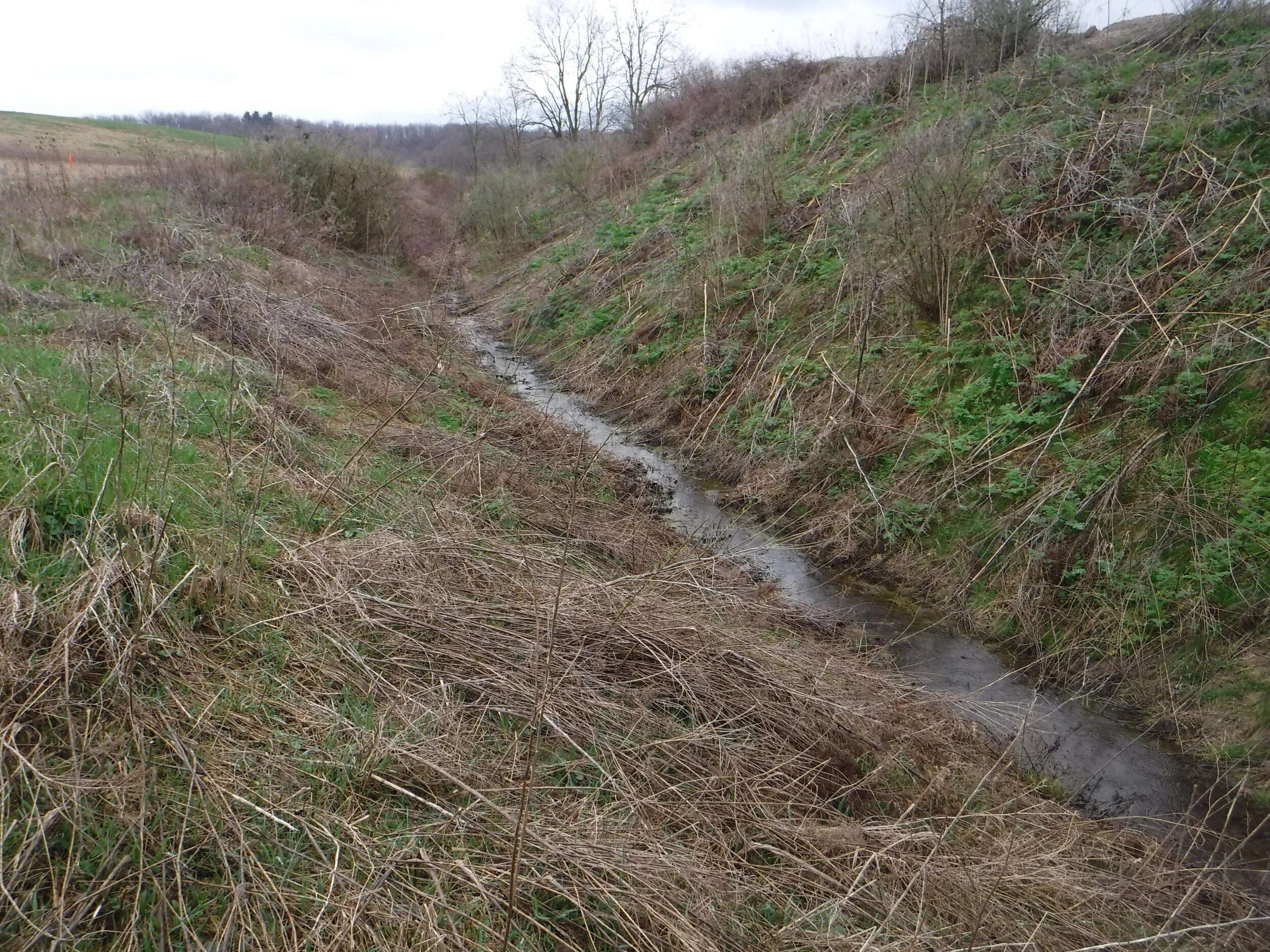
The Allegheny County Airport Authority sponsored the Solar Photovoltaic Microgrid Project at the Pittsburgh International Airport to make productive use of a capped and inactive landfill. Rhea was contracted to complete a wetland investigation of the site.
Wetland Investigation of Microgrid Solar PV Array Site
In 2019, The Allegheny County Airport Authority (ACAA) sponsored the Solar Photovoltaic (PV) Microgrid Project at the Pittsburgh International Airport (PIT) to make productive use of a capped and inactive, 30-acre landfill just south of the airport. In support of developing a microgrid on top of the inactive landfill, Rhea was contracted by Ricondo to complete a wetland investigation of the site.
Rhea’s wetland investigation was completed in April 2020 through historical reviews of the area and a field investigation. The wetland investigation was conducted using procedures outlined in the US Army Corps of Engineers (USACE) Wetlands Delineation Manual (Environmental Laboratory, 1987) and the Regional Supplement to the Corps of Engineers Wetland Delineation Manual: Eastern Mountains and Piedmont Region (April 2012). USACE standards require that three criteria be met for an area to be classified as a jurisdictional wetland: (1) the dominance of hydrophytic vegetation, (2) the evidence of wetland hydrology, and (3) the presence of hydric soils. As a result of the investigation, one potential wetland area and twelve areas of concern (AOCs) related to significant standing water were identified. In addition, one area of potential acid mine drainage was identified near the southernmost portion of the project site.
Rhea presented the client with detailed maps of the field investigation which documented the locations of all AOCs in relation to the subject property and proposed microgrid construction site. The potential wetland area was located outside of the proposed Solar PV Microgrid Project Location, and thus, was unlikely to impact site development activities. Although there were no other locations that fit the USACE criteria for a jurisdictional wetland, Rhea was thorough in laying out all other AOCs, such as locations of standing water and concerning vegetation, with recommendations that these areas be addressed to encourage proper drainage before true wetlands could be established on the landfill cap.
Rhea has many past and ongoing projects on landfill sites, and because of Rhea’s specialization in this area, the team was keen to notice fine details of the landfill to provide the client with an insightful investigation and recommendations on next steps.
Select images courtesy of PIT.
Services: Environmental Services
Industries: Energy + Utilities










